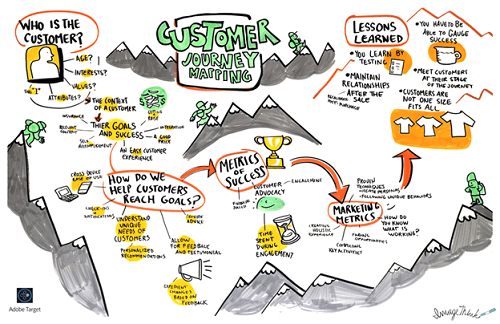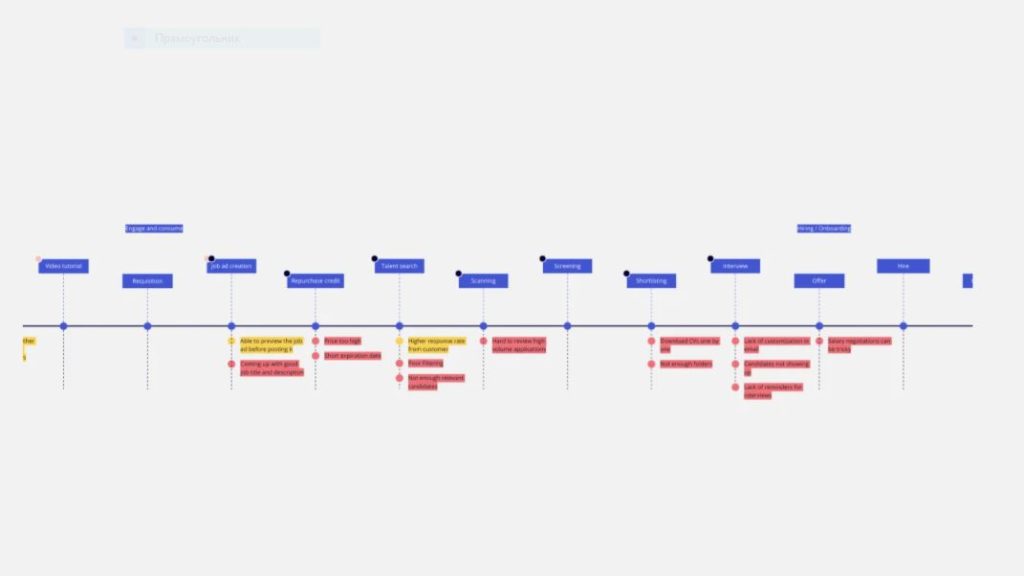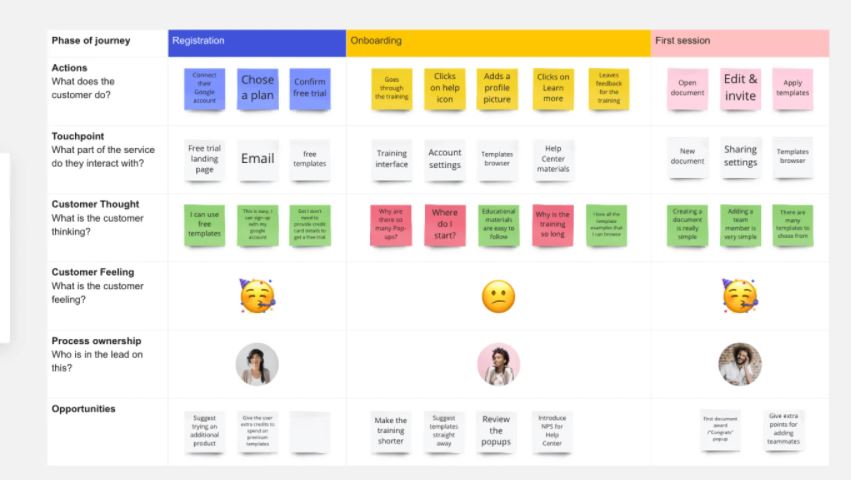The Customer Journey Map (CJM) or the user's path map is one of the ways to find new hypotheses for increasing the number of applications and sales.
CJM is considered a marketing tool, but at YuSMP Group we use it at the prototyping stage. This is how we create products that will be easier to promote in the future. For example, we used Customer Journey Map to develop a mobile application for a taxi aggregator and an online training platform.

What a Customer Journey Map is
The Customer Journey Map is a visual storyline of each customer's interaction with your service, brand, or product.
CJM provides a clear example of consumer behavior. Thanks to this "map", you can see the bottlenecks on the way to achieving the goal, whether it is a purchase, an application, or another action. The Customer Journey Map shows what you are doing right and where you can make improvements throughout the customer lifecycle.
The map shows all the points of contact with the brand: from the moment when users first heard about the company, to their direct interaction with the product, website, or mobile application. CJM includes all the actions that the client performs on the way to achieving the goal during a certain time.
Why Customer Journey Map is necessary
The sooner you have an understanding of CJM customers, the more effective marketing will become. Understanding the customer's experience at every stage of the purchase path is crucial for turning business ideas into long-term improvement strategies.
Customer Journey Map Design
There is no right or wrong way to create a customer path map. It can be made in the form of a timeline, a table, or a blackboard. The main thing is to think over which paths and stages are most appropriate to display.

CJM as a timeline ( template An Online Whiteboard & Visual Collaboration Platform for Teamwork | Miro )

COM as a board (template An Online Whiteboard & Visual Collaboration Platform for Teamwork | Miro )
How to Create Your Own Customer Journey Map
- Set goals. Think about what you want to achieve. This may be a problem that you are trying to solve, a product that needs to be launched or updated, or it may be an experience that you want to learn more about. Formulate the problems you are facing in order to make better use of CJM.
- Create images. Create a detailed portrait of the client whose journey you will display on the map. Use all available demographic and psychographic data to create your characters.
- Make a list of touchpoints. Touchpoints are all the places on your website or on the way to the brand where customers can interact with the company, products, goods, or services. List the points that your customers are already interacting with. Then list the ones that you would like to use.
- Define the elements to display on the map. The Customer Journey Map can be enlarged or reduced as needed.
- Identify the resources that you have and that you need. As soon as you start making a map, you will notice problems on the way to purchase. As you develop the map, use the interactive whiteboard to make a list of resources that you will need to fill in the gaps. Fill up the map by adding resources and tools. This way, you can more accurately predict how adding or subtracting interaction points can affect the business and increase revenue.
- Go through the path yourself. Work with CJM and see if you can answer the questions that you asked at the beginning of the process. Then you will be able to better imagine how to achieve your team's goals.
- Iterate if necessary. After testing the map, make the necessary changes. You can repeat this process over time, adding new features and updates.
Creating a Customer Journey Map can help a company visualize how customers feel at all points of contact with the brand. This way you are able to avoid potential problems in advance, keep the attention of customers longer and get key information for solutions.
Contact the experts to create a Customer Journey Map that will be effective. At YuSMP Group, this tool is used in the first stages of product development. Write to us to get a free consultation and evaluation of your project.